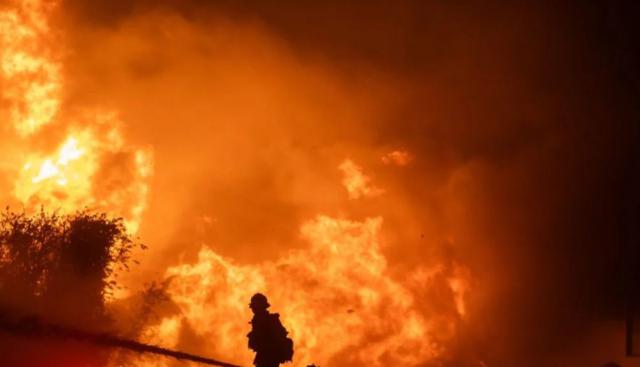SHANGHAI (Reuters) – Air pollution in China’s heavy-industrial province of Henan worsened in December even as other regions improved, official data showed, with its cities hit by unfavorable weather and a struggle to find cleaner sources of economic growth.
FILE PHOTO – A view of sunset is seen in smog in Zhengzhou, Henan province, China January 2, 2017. Picture taken January 2, 2017. REUTERS/Stringer
For a second year, China is restricting industrial output, traffic and coal consumption in the smog-prone north in a bid to cut pollution during the winter heating period, when thousands of mainly coal-burning boilers are switched on.
But nine cities in Henan, home to around 95 million people, still recorded a rise in small, lung-damaging emissions known as PM2.5 to an average of 82 micrograms per cubic meter in the last month of 2018, up 12 percent from a year earlier.
Emissions in the cities – which include several big steel, aluminum and coal producing districts – had already soared by 107 percent from a year earlier in November, according to a Reuters analysis of official data.
As many as 79 cities throughout the north and east have drawn up plans to control smog this winter, with many committed to cutting PM2.5 emissions by 3 percent from last year.
Among the 79, average PM2.5 levels reached 66 micrograms per cubic meter in December, down 18 percent from a year earlier, according to Reuters calculations. This was still nearly double China’s national standard of 35 micrograms.
But the local increases in Henan and elsewhere show how much cities are at the mercy of the weather when it comes to meeting air quality targets, with conditions such as high humidity and low wind exacerbating smog.
“My analysis indicates that (the increases in Henan) are accounted for by the weather,” said Lauri Myllyvirta, energy analyst with Greenpeace, who has been tracking the Chinese data.
Henan’s smog concentrations have worsened since the end of last year, with the local government saying on Saturday that 12 provincial cities have issued “red alerts” for the coming week.
Some 28 cities in the major pollution control zone around China’s capital Beijing are also struggling to meet winter air quality targets, with average PM2.5 in the last two months of 2018 up 17 percent compared with a year earlier.
Reporting by David Stanway; editing by Richard Pullin






Leave a Reply